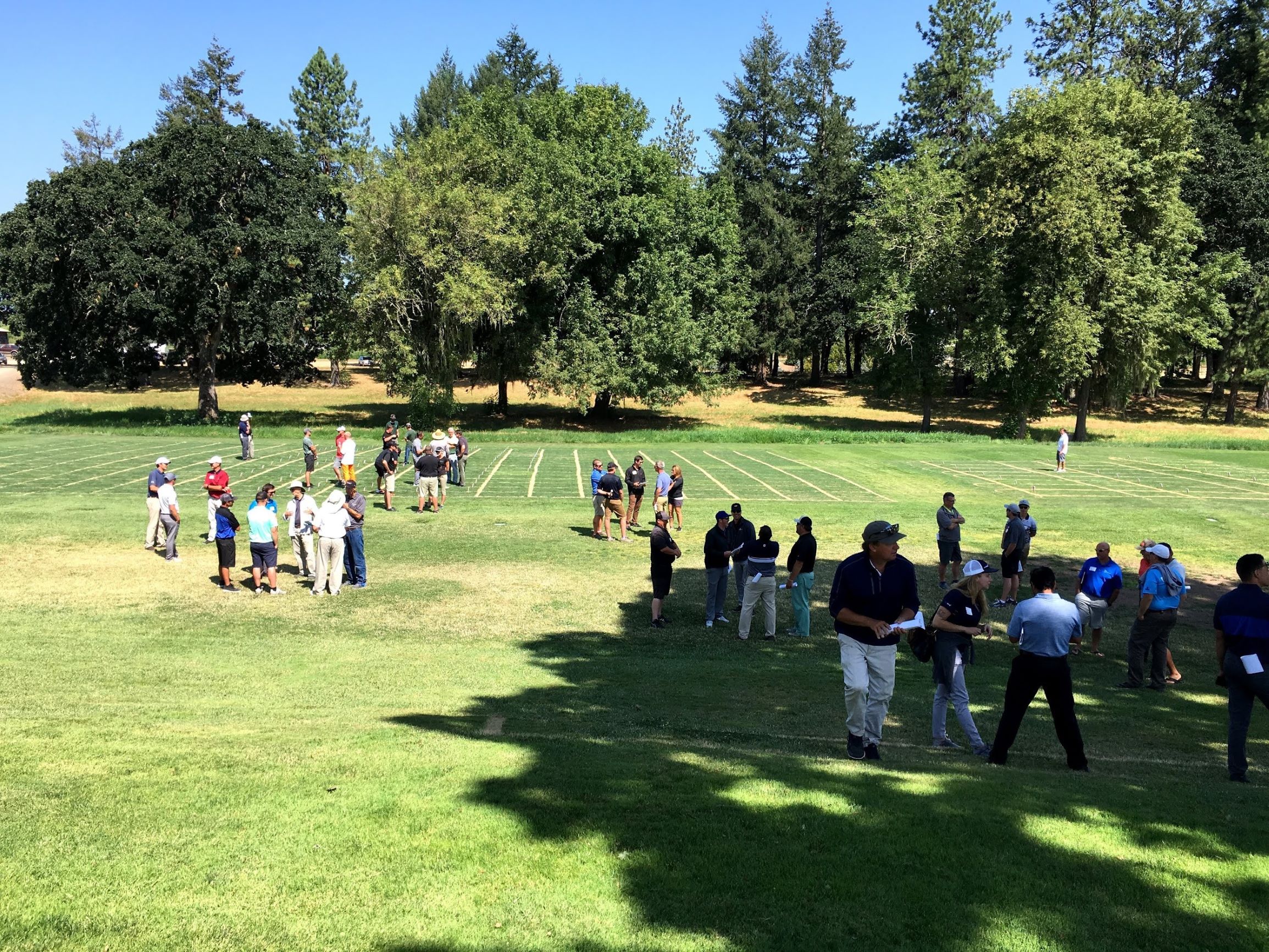By Michael Barnes
This article was originally published on the Low Input Turf Using Fine Fescues blog.
A recent article by Maria Ignatieva and colleagues has prompted me to reflect on the importance of going beyond traditional disciplinary boundaries in turf research and both my past work as part of the Low Input Turf project as well as my current work. Ignatieva and her colleagues led a 3-year research project investigating lawns in Sweden aptly named the LAWN project. It brought together researchers from multiple disciplines, decision makers such as city council members, and users such as golfers and local residents. The LAWN project incorporated perspectives and feedback from these diverse sources to understand the socio-ecological phenomenon that are lawns in a more holistic way. While difficulties of this work are numerous including the balancing of research demands (e.g., incorporating diverging research approaches), and the time and effort devoted to coordination, the benefits are vast. One of the main benefits of this approach is that findings are more actionable as can actually help to inform landscape design and decision making related to lawns based on this more holistic approach taken in the research. When you incorporate diverse perspectives as an integrated part of the research process, you’re able to discuss findings that address social, ecological, and economic issues comprehensively rather than piecing together such findings from multiple studies that may or may not be entirely focused on a particular landscape.
The authors suggest one of the most important aspects is to have the hypothesis or question under investigation to be strong and well defined. Having a strong central question allows for even a large and diverse team to check if their portion of the project is aligned with that question, and for others on the team to be able to do their own checking to keep things on track.
What does this mean in the context of the future of turf research? I would suggest that the future of turf research should look a lot like the LAWN project, where teams of researchers, practitioners, and stakeholders are oriented around understanding and fixing a specific problem with a robust central question that allows everyone to easily reflect on whether their work helps to answer that question. Perhaps the first step in achieving this type of more open and problem-focused research is for more crossover to occur between researchers themselves. This approach would allow for knowledge transfer both through traditional forms such as articles and presentations but more importantly through direct relationships with those who share a different disciplinary background.
A basic version of the type of transdisciplinary work described by Ignatieva and colleagues has already taken place as part of the Low Input Turf project. This entailed a direct connection between a variety of stakeholders including academics from multiple disciplines, public land managers, and industry professionals. The outcomes from this project were used to directly inform research priorities for colleagues as well as aiding in framing outreach efforts to public land managers and decision makers regarding the use of low input turf species (Figure 1). (For a detailed discussion of the findings see this past post as well as published in article form see Barnes et al., 2020). This work demonstrated that when a more holistic approach is taken better and more insightful outcomes arise.
My current role as a social scientist working within a turfgrass science program allows for that type of knowledge sharing and collaborative effort to deepen. I’m a part of diverse research teams looking at issues of watering restrictions, maintenance regimes, and perceptions of artificial turfgrasses. Through these teams the diffusion of knowledge is accelerated in both directions when the relationships are direct as I have experienced over my first 3 months. This has already allowed me to not only gain knowledge in the area of turf science but more importantly to understand the key questions and relevant factors, and identify areas where work needs to be done. This allows not only for better collaboration, but enhanced outcomes for research, decision-makers, and users of turf spaces.
References
Barnes, M.R., Nelson, K.C., Kowalewski, A.R., Patton, A.J., & Watkins, E. (2020). Public land manger discourses on barriers and opportunities for a transition to low input turfgrass in urban areas. Urban Forestry & Urban Greening, 53, 126745. https://doi.org/10.1016/j.ufug.2020.126745
Ignatieva, M., Eriksson, F., Kätterer, T., Tidåker, P., Wissman, J., Ahrné, K., Bengtsson, J., & Hedblom, M. (2020). Pros and cons of transdisciplinary research: A case study of Swedish lawns and their sustainable alternatives. Urban Forestry & Urban Greening, 56, 126799. https://doi.org/10.1016/j.ufug.2020.126799
